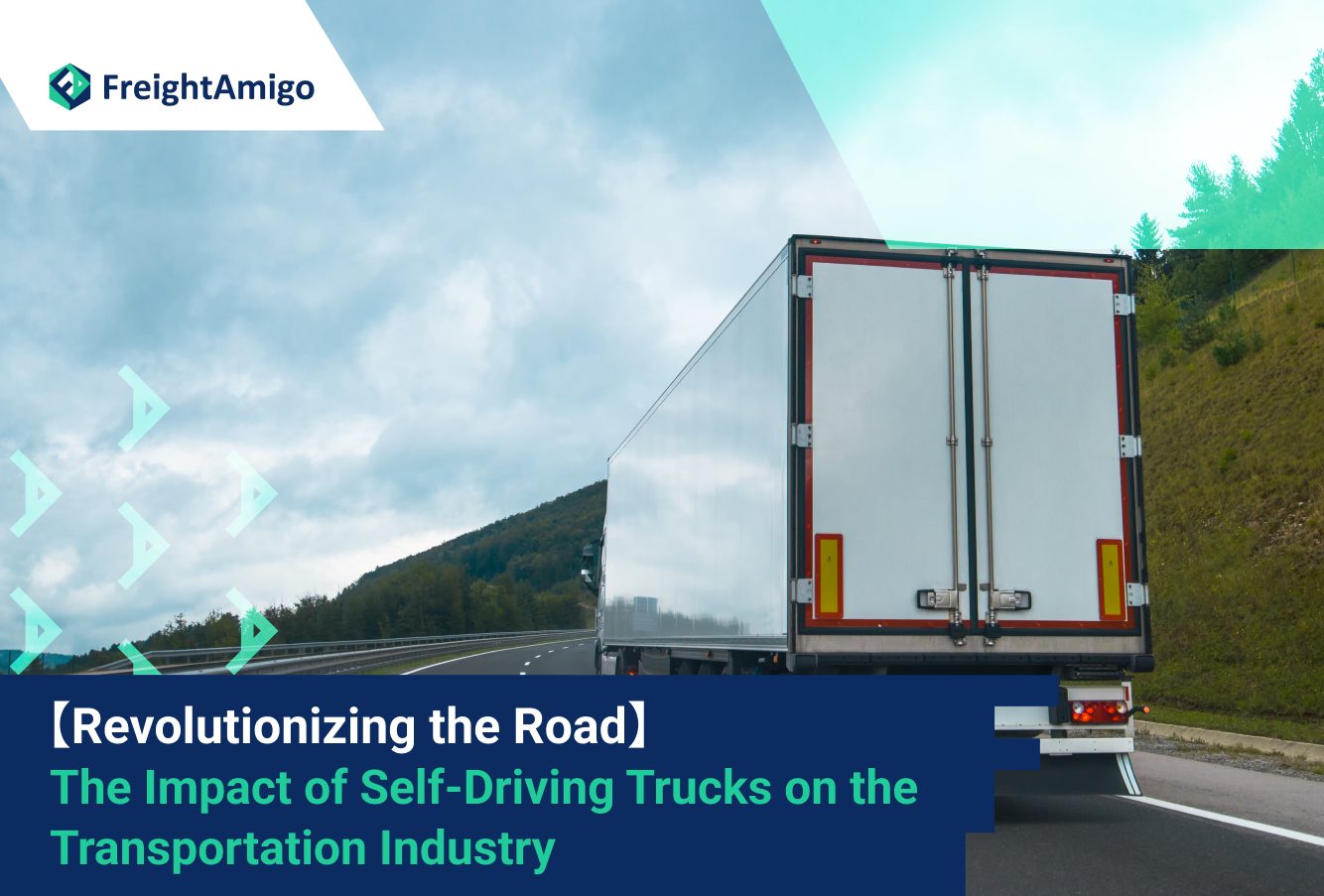Author Name: Tiffany Lee – Marketing Analyst at FreightAmigo
Self-driving trucking technology has rapidly evolved from a futuristic concept to a tangible possibility. With estimates suggesting that fully autonomous fleets could be a reality within a decade, it is crucial to explore the potential benefits and challenges associated with self-driving trucks. This article examines the impact of self-driving trucks on the transportation industry, considering the advancements, advantages, and obstacles that lie ahead.
Want To Compare The Best Express, Air Freight, Sea Freight, Rail Freight & Trucking Rates So As To Have Better Control On Cost?
The Evolution of Self-Driving Trucks
The journey towards autonomous trucking has already begun, with leading companies like Scania and Volvo taking the initial steps. In 2016, Scania successfully completed a journey from Sweden to the Netherlands using a technique called platooning, where a driver leads the convoy while the rest of the trucks follow automatically. Volvo, on the other hand, has signed contracts for autonomous logistics, showcasing the industry’s commitment to self-driving technology.
Advantages of Self-Driving Trucks
1. Increased Capacity and Efficiency
Self-driving technology allows companies to tap into latent capacity by eliminating off-hours. Autonomous trucks can operate continuously, without the need for breaks or vacations, resulting in improved efficiency and increased truck usage.
2. Addressing the Driver Shortage
The trucking industry is currently facing a shortage of qualified drivers. Self-driving trucks can help alleviate this problem by reducing the reliance on human drivers. While human supervision is still required in the short term, autonomous technology has the potential to bridge the gap and ensure a steady supply of drivers in the long run.
3. Environmental Benefits
Self-driving trucks can contribute to reducing the industry’s environmental impact. Through techniques like platooning, which minimizes air drag and optimizes fuel consumption, autonomous technology can help make logistics greener. Additionally, self-driving trucks can make electric trucks more viable by eliminating the need for long waiting times during charging.
4. Improved Safety
Autonomous vehicles have the potential to significantly improve road safety. With over 90% of accidents caused by human error, removing human drivers from the equation can reduce accidents and save lives. While self-driving technology may not handle all edge cases, it is generally safer than human-operated vehicles.
Challenges of Self-Driving Trucks
1. Liability and Safety Regulations
The question of liability in accidents involving autonomous vehicles is a significant challenge. The current liability regulations are based on the premise of human-operated vehicles. To ensure the safe implementation of self-driving trucks, new regulations need to be developed, clarifying the responsibilities of manufacturers, software systems, and human supervisors.
2. Infrastructure Requirements
The introduction of self-driving trucks requires significant infrastructure changes. Dedicated lanes for autonomous vehicles, construction of suitable roads, and robust GPS signals are essential for their safe operation. These infrastructure upgrades require substantial investments and careful planning.
3. Cybersecurity Concerns
Self-driving trucks heavily rely on technology and data, making them susceptible to cybersecurity threats. Robust cybersecurity protocols must be developed to protect against hacking and ensure the security of autonomous systems.
4. Public Acceptance
Public acceptance is crucial for the success of self-driving trucks. Many people are skeptical about the safety and effectiveness of autonomous vehicles. Building trust and acceptance through public outreach and education campaigns is essential to overcome this challenge.
5. Ethical Considerations
Autonomous vehicles raise ethical questions, particularly in critical situations where decisions must be made, such as choosing between saving the driver or other individuals. These ethical dilemmas require careful consideration and discussions to develop guidelines for programming self-driving vehicles.
6. Impact on Related Industries
The implementation of self-driving trucks will have ripple effects on related industries. Businesses that rely on proximity to busy highways, such as restaurants, gas stations, and hotels, may experience a decline in business. Adapting to these changes and finding new opportunities will be necessary for these industries to thrive.
7. Job Displacement
Concerns about job displacement arise with the introduction of self-driving trucks. While autonomous technology may reduce the need for human drivers, it will also create new job opportunities in monitoring and maintenance roles. The impact on employment numbers is difficult to predict accurately and will depend on various factors.
The Future of Self-Driving Trucks
The future of self-driving trucks is promising, but several key factors will determine its success. Partnerships between transportation and technology experts are crucial to outperform the competition and drive innovation. Collaboration with authorities and regulators is also essential for developing appropriate legislation and ensuring safe implementation. The logistics industry needs to embrace self-driving technology as a means to improve working conditions for truckers and make logistics greener.
While challenges exist, such as liability regulations, infrastructure requirements, and public acceptance, the potential benefits of self-driving trucks outweigh these obstacles. The transportation industry must navigate these challenges to unlock the full potential of autonomous trucking and create a safer, more efficient, and sustainable future.
In conclusion, self-driving trucks have the power to revolutionize the transportation industry. Through increased capacity, improved efficiency, reduced environmental impact, and enhanced safety, autonomous technology can drive significant changes. However, addressing challenges related to liability, infrastructure, cybersecurity, public acceptance, and job displacement is crucial for successful implementation. By embracing partnerships, focusing on safety, and considering the broader impact of autonomous logistics, the transportation industry can harness the transformative power of self-driving trucks.
There Are Different Options For Cargo Transportation. If You Want To Choose The Most Convenient And Suitable Solution, It Is Best To Have The Full Support Of Logistics Experts! If You Are Planning To Ship Goods Overseas, Please Go To The FreightAmigo Page For Inquiries.
===
Read More:
【Cosmetic Product Recycling】 A Guide to Sustainable Reverse Logistics
【Rise of Green Supply Chain】 Pioneering Sustainable Practices in Logistics
【ESG in Logistics】 How ESG Practices Drive Social Responsibility in Logistics
===
If you have any inquiries on logistics/supply chain, feel free to contact FreightAmigo now:
Chat with us online OR
Phone : +852 28121686
WhatsApp: +852 27467829









































